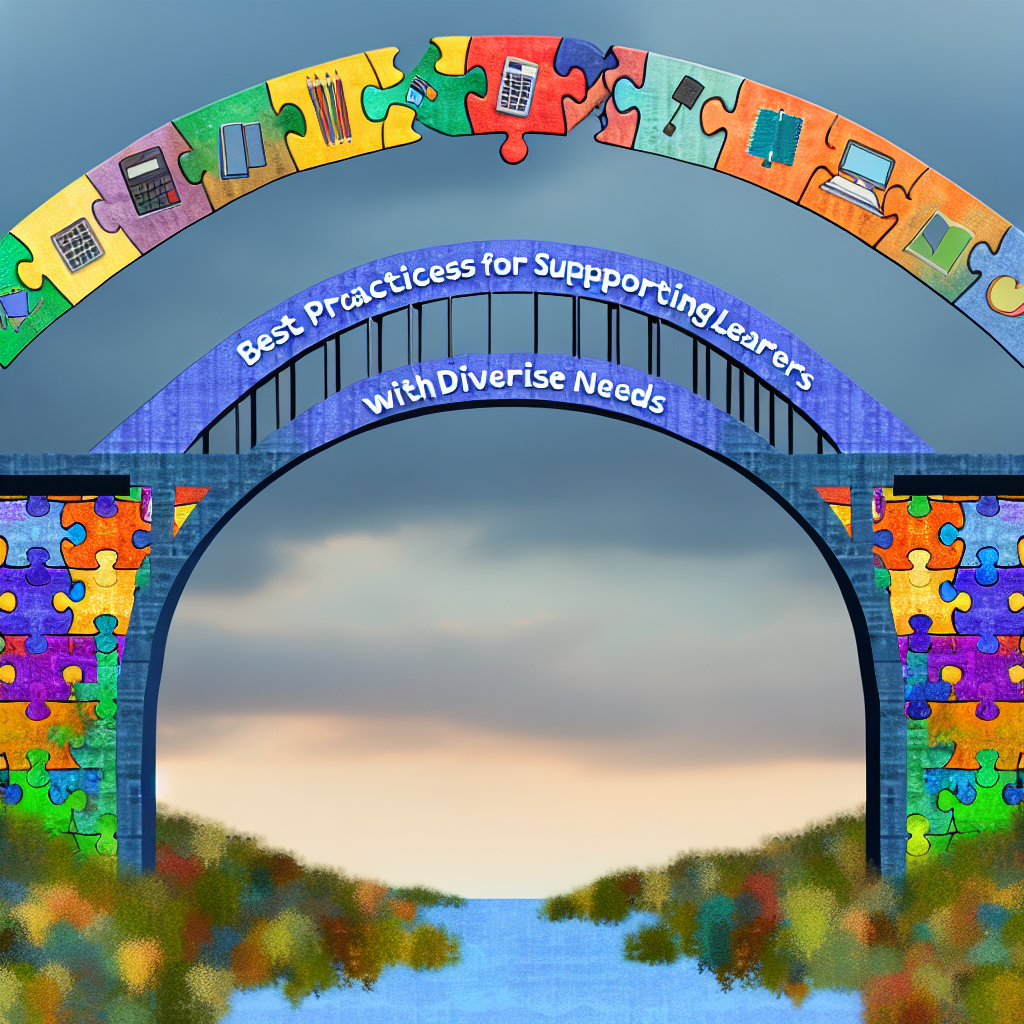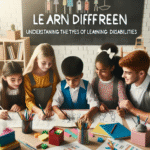
Bridging the Gap: Essential Best Practices for Supporting Learners with Diverse Needs
Introduction
In an increasingly diverse world, the landscape of education is evolving rapidly. With students coming from various backgrounds, cultures, and abilities, teachers and educators are constantly challenged to meet each learner’s unique needs. Bridging this gap is not merely a task; it’s an essential commitment that demands an informed approach, innovative strategies, and unwavering dedication. This article will explore best practices for supporting learners with diverse needs, providing actionable insights and real-world examples to empower educational stakeholders.
Understanding Diverse Needs in Education
Defining Diverse Needs
Learners come with a wide spectrum of needs—these may include, but are not limited to:
- Cognitive Differences: These include learning disabilities, such as dyslexia or ADHD, that necessitate tailored instructional strategies.
- Cultural Variations: Language barriers and diverse cultural backgrounds can affect comprehension and engagement.
- Emotional and Behavioral Challenges: Students may experience emotional or behavioral issues that impact their learning.
- Physical Disabilities: These can affect mobility, communication, and participation in traditional classroom settings.
Understanding these diverse needs is the first critical step in Bridging the Gap: Best Practices for Supporting Learners with Diverse Needs.
The Importance of Inclusion
Inclusion is not just a legal requirement; it is a moral imperative. An inclusive classroom fosters a sense of belonging, ensuring all students feel seen and valued. Various studies have shown that inclusive environments can lead to:
- Increased student engagement
- Improved social interactions
- Better academic outcomes
Case Study: The Power of Inclusive Classrooms
A study conducted in a suburban school district demonstrated the impact of inclusive classrooms. Teachers received specialized training on differentiated instruction tailored to the needs of students with disabilities. After implementing these strategies, the school recorded a 30% increase in overall student participation and a 20% rise in standardized testing scores.
Best Practices for Supporting Diverse Learners
1. Differentiated Instruction
Differentiated instruction involves tailoring teaching methods to meet various learning preferences. This approach is grounded in understanding that no two learners are the same.
Strategies for Differentiated Instruction:
- Flexible Grouping: Organize students into varying groups based on their learning needs.
- Choice Boards: Provide students with a menu of activities catering to different skills and interests.
- Scaffolded Supports: Introduce new concepts incrementally, providing additional support as needed.
Table: Differentiated Instruction Techniques
| Technique | Description | Best For |
|---|---|---|
| Flexible Grouping | Varying groups for specific tasks | Diverse learning styles |
| Choice Boards | Activities tailored to student interests | Engaged learners |
| Scaffolded Supports | Gradually introducing complex concepts | Learners needing additional help |
2. Universal Design for Learning (UDL)
UDL is a framework aimed at optimizing teaching to support all learners by providing multiple means of engagement, representation, and action/expression.
Three Key Principles of UDL:
- Engagement: Offer choices to boost motivation.
- Representation: Use different methods to present information.
- Action and Expression: Allow students to demonstrate their understanding in varied ways.
3. Culturally Responsive Teaching
Culturally responsive teaching recognizes the importance of including students’ cultural references in all aspects of learning.
Strategies for Culturally Responsive Teaching:
- Integrate Diverse Perspectives: Include literature and examples from various cultures.
- Build Relationships: Foster a classroom community where students feel safe to share their experiences and backgrounds.
- Empower Student Voice: Encourage students to express their thoughts, making connections to their cultural identities.
4. Using Technology Effectively
Technology can play a pivotal role in supporting diverse learners. Assistive technologies can help break down barriers.
Hands-On Tools:
- Text-to-Speech Software: Assists students struggling with reading.
- Interactive Learning Apps: Engage students with varied learning preferences.
- Learning Management Systems: Provide resources and materials accessible to all learners.
Case Study: Tech-Enabled Learning for All
A high school implemented a new Learning Management System (LMS) that included features such as captions for videos and adjustable reading levels. As a result, students with learning disabilities improved their comprehension by more than 40% within one semester.
5. Building Strong Relationships with Families
Engaging families can significantly impact student success.
Ways to Foster Family Engagement:
- Regular Communication: Keep parents informed about academic progress and challenges.
- Family Workshops: Provide resources and strategies that parents can use at home.
- Involvement Opportunities: Encourage family participation in school events, fostering a communal learning environment.
Conclusion
Bridging the gap in education for learners with diverse needs is not only a challenge but also a profound opportunity to enrich the educational landscape. By employing best practices such as differentiated instruction, Universal Design for Learning, and culturally responsive teaching, educators can create inclusive environments where all learners thrive. The responsibility lies with us to make learning equitable, accessible, and engaging for everyone.
Actionable Insights:
- Start by assessing your effectiveness in meeting diverse needs in your classroom.
- Implement at least one new strategy before the end of this semester.
- Involve families in the learning process through communication and collaboration.
FAQs
1. What are diverse learning needs?
Diverse learning needs refer to the varying requirements students have based on their cognitive abilities, cultural backgrounds, emotional states, and physical conditions.
2. How can I implement differentiated instruction effectively?
Incorporate flexible grouping, choice boards, and scaffolded supports to cater to different learning preferences.
3. What is Universal Design for Learning?
Universal Design for Learning is a framework that provides multiple ways for students to engage with, understand, and express their learning.
4. Why is culturally responsive teaching important?
Culturally responsive teaching fosters equality in the classroom, making learning relevant and accessible for students from diverse backgrounds.
5. What role does technology play in supporting diverse learners?
Technology can provide assistive tools that cater to individual needs and facilitate customized learning experiences.
6. How can I engage families in the learning process?
Maintain open communication with families, offer workshops, and provide opportunities for them to participate in school activities.
By embracing the various strategies discussed and fostering a culture of inclusion, educators can truly make strides in Bridging the Gap: Best Practices for Supporting Learners with Diverse Needs.








